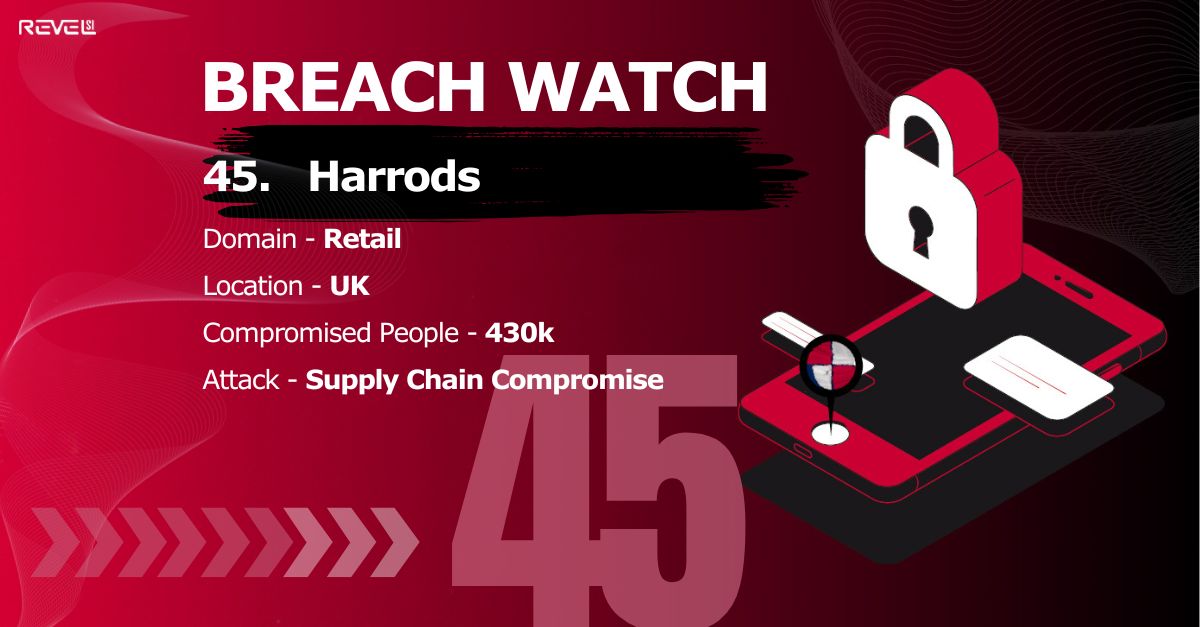Harrods Data Breach: 430,000 Customer Records Exposed

Overview
Luxury retailer Harrods has confirmed a new data breach that exposed the personal details of around 430,000 customers. The breach comes only months after the London department store faced a separate cyber incident earlier this year. While the company says no payment or password details were taken, the scale of the leak and the fact that it originated from a third-party provider raise concerns about data security in retail.
How it happened
According to Harrods, the breach was not the result of a direct hack on its own systems. Instead, attackers accessed data through one of the company’s external service providers. This is known as a supply-chain or third-party attack—criminals target a partner or vendor with weaker defenses to steal information.
The stolen information includes basic identifiers such as names, email addresses, phone numbers, and mailing addresses. In some cases, internal marketing labels (like loyalty status) may also have been included. Harrods says no passwords or financial/bank card data were affected.
The company reports that the breach has been contained, relevant authorities have been notified, and affected customers are being contacted. Harrods says it has received messages from the attackers but has chosen not to engage with them.
Risks
Even without financial data, exposed contact details can still be misused. Attackers may attempt:
- Phishing emails or scam calls pretending to be from Harrods or other trusted brands.
- Identity fraud when this data is combined with information from other leaks.
- Targeted scams aimed at loyal or high-spending shoppers.
Because Harrods is a well-known luxury brand, its customer base can be especially attractive to scammers. The incident also highlights the growing risk of third-party providers, which may hold sensitive data outside a company’s direct control.
Recommendations
For customers:
- Be cautious of unexpected emails, texts, or calls. When in doubt, contact Harrods via official channels.
- Don’t click suspicious links or share personal details in response to unsolicited messages.
- Monitor your email accounts for unusual activity and enable multi-factor authentication where possible.
- Stay informed—watch for official updates if new findings emerge.
For businesses (takeaway):
Your security is only as strong as the weakest vendor. Set clear security requirements for suppliers, assess them regularly, and monitor third-party risk just as closely as your own systems.
